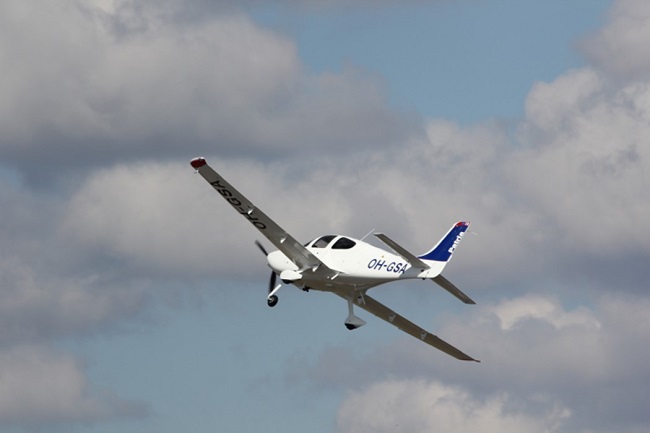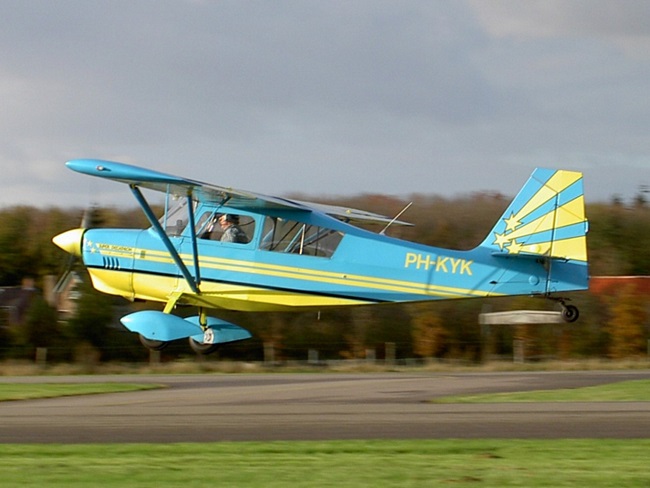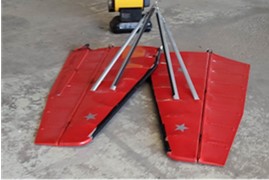By Fred Gibbs
According to the latest NTSB report I was able to pull down, there have been a few fender benders across the state, but only one fatal accident here in Arizona since the beginning of the year. That was a Van’s RV-7A that crashed under unknown circumstances near the Triangle Airpark (AZ50), White Hills, Mohave County, Arizona. The pilot, the sole occupant, was fatally injured. No other information was available.
FOR INFORMATION ON ALL ACCIDENTS/INCIDENTS THAT OCCURRED LAST MONTH, REFER TO JIM TIMM’S ACCIDENT SUMMARY.

SAFETY PILOT REQUIREMENTS – Just what is a safety pilot and when is one needed?
As you all know, an instrument-rated pilot must maintain certain currency requirements to act as pilot-in-command to legally operate under Instrument Flight Rules. One of the primary requirements is to have conducted six instrument approaches during the previous 6 months. Now most of us GA pilots meet this requirement by flying approaches under simulated conditions using foggles or a hood. When doing this, there is a FAR addressing this condition, FAR 91.113(b). This rule says that any operation conducted under this rule, i.e. wearing a view limiting device, requires that vigilance be maintained by each person operating the aircraft so as to see and avoid other aircraft. So, if the person flying is wearing a view limiting device, i.e. foggles or a hood, another qualified pilot must be on board to help meet the “see and avoid” requirement. That pilot is referred to (usually affectionately) as the safety pilot.
But what are the requirements or qualifications needed to actually be a legal safety pilot? Well, FAR91.109 (c)(1) says the safety pilot must hold at least a private pilot certificate for the same category and class ratings that you are flying in.
(I believe that also includes complex and/or high-performance ratings if flying in one of those – my interpretation.)

A current medical is also required: FAR 91.109 says a safety pilot is a required crew member, and FAR61.3(c) says all required crew members need a current medical certificate. So you need, at a minimum, an FAA class III medical.
(NOTE: a basic Med apparently does NOT qualify – my interpretation.)
Now, if the flight is done under VFR conditions, the safety pilot DOES NOT need to be instrument qualified, DOES NOT need to meet the recency experience of three takeoff and landings in the previous 90 days OR EVEN A CURRENT BFR! As long as the safety pilot acts only in the role as a safety pilot (in accordance with FAR 61.3(c) and FAR 91.109), none of those requirements apply to you. If you assume the role as the PIC at any time, those rules NOW APPLY to you, so beware…
In summary, as a private pilot with a current FAA medical and the appropriate category and class ratings, you can act as a safety pilot for your friend doing practice instrument approaches under VFR conditions.
However, I am a firm believer that if you are out practicing instrument approaches under the hood/foggles, the safety pilot should be another instrument-rated pilot, who actually knows what you should be doing, what you are actually doing, and can keep you safe and legal. Just because you have a safety pilot on board while doing practice instrument approaches does not make you a proficient pilot, only a legal (sic) pilot! Making a lousy screwed up approach does not make you proficient! Imagine, how would a non-instrument-rated pilot even know you busted minimums, flew a totally wrong missed approach procedure and/or screwed up the holding pattern? The whole objective of practicing instrument approaches is to ensure proficiency, not just to be legal!
PS – if you go beyond the 6 months without the 6 approaches, the only way to get current is to do an Instrument Proficiency Check (IPC) with your local CFII. It is like an instrument check ride, but you can’t fail. However, you can also not pass (like a BFR), if you are not up to snuff on your approaches and flying skills. Your CFII may want better performance from you before he/she will sign you off.
FRED’S PERSPECTIVE:

Well, I am without airplane as I write this. My trusty ol’ time machine is up on jacks at the newly re-located Bellanca maintenance facility over in Sulphur, Oklahoma, close by Ardmore, Oklahoma. It is there for a bunch of repairs and modifications by the experts at Bellanca. 723 NM in 4.5 hours computes out to a ground speed of 160kts/184mph, including one stop for gas halfway – not bad at all! The flight was totally uneventful – the best kind. Even found cheap gas at Santa Rosa, NM: only $4.45 a gallon. When I got back home, I checked my flight on Flight Aware and it looked almost perfectly straight except for the slight diversion off route to Santa Rosa. I also submitted, and received, an ADS-B performance report through the FAA website, and my ADS-B performance was perfect. I normally do one every 6 months just to check for my own satisfaction. Obviously, I used flight following all the way. The service was, as usual, very good, and they took me right under all the MOA’s around Shepard AFB there by Wichita Falls, TX. Not to brag, but I greased the landing there at Sulphur, OK (F30) just to impress the folks at the factory. (Note to self – don’t break your arm patting yourself on the back!)

The Bellanca maintenance operation there at F30 is a work in progress. It is under new ownership, and all the factory inventory is still in the moving mode. Part of it is in Sulphur, but there is still a lot of inventory – tractor trailer loads - to be moved down from Minnesota. When I taxied in, there were 4 other Super Vikings there, two just finished up and leaving, making room for me, and two in the back of the hangar being worked on. The guys there are nice friendly folks, great to work with and very knowledgeable on Bellanca Super Vikings. They pushed my airplane into the hangar and put it right up on jacks. The primary reason I took it there was to check out and fix the fuel leak coming out of the bottom of the left-wing tank. Now, it only leaked when I filled the tank up to the tippy top, so they filled it up, climbed under and it only took a minute to identify the problem – an old leaking gasket, and a simple fix. Unless of course, you consider it is up inside the wing, only accessible thru an inspection plate, and you need 2 elbow joints and 3 wrist joints to reach it!! They even allowed me to assist in some of the work while I was there.
The other primary reason for going to the factory was to have the horizontal stabilizers and elevators recovered. Just in case you did not know this, the Bellanca Super Viking is a fabric covered aircraft, and the horizontal stabilizers and elevators are also fabric covered and needed recovering. So, I worked with the factory guy – Mike – and we removed the entire horizontal stabilizer and elevator assembly off the airplane. I was surprised at how (relatively) easy they were to remove, and none of the control cable adjustment or connections were affected. Fortunately, Mike had another set of horizontal stabilizers and elevators in stock, and he had already prepped those for me, which will save a lot of time in the shop. It is a labor-intensive task to do fabric work! And, of course, they will need to be re-painted and new heavy-duty black leading-edge tape added.

I suspect they will have had my airplane all the month of March and possibly a couple of weeks of April. The punch list is not extensive, complicated, or expected to take too long, but the fabric work is the deciding factor. The punch list includes such tasks as adjusting the fuel sensors and/or sending units so my fuel gauges read correctly (if possible!), adjusting the gear doors so they close tightly, replacing the wing leading edge protective tapes with new heavy-duty black tape, re-connecting/replacing the fuel strainer cable, and a biggie, installing an external 14-volt power plug receptacle. The external 14-volt power plug receptacle is a project requiring cutting an opening in the fabric on the fuselage below the baggage door, welding in mounts, installing the power receptacle, re-fabricing (is that a word?), taping, re-doping and painting the fabric to make it look like it was original.
As a side note, why do some of us own airplanes?

Well, it took me a little over 5 hours total time to fly to the airport at Sulphur, Oklahoma, and for less than $300.00 dollars, with no TSA issues or lines. It cost me $363.00 dollars for my one-way return airline ticket back home, and it took me 12 hours to get back home! It involved a 2-hour drive to DFW, three different airplanes, one de-planement and unloading of all the baggage from a broke 737 at the gate at DFW, a new gate assignment with a 1 hour 30 minute delay out of Dallas, a missed connection in Phoenix, and 2 re-ticketing events to finally get home on via the airlines! DUH!!!
Lost Words from my childhood
Mergatroyd!... (or was it “Mergatroid?)

Do you remember that word? Would you believe the spell-checker did not recognize the word Mergatroyd? Heavens to Mergatroyd!
The other day a not so elderly (I say 75) lady said something to her son about driving a Jalopy. He looked at her quizzically and said "What the heck is a Jalopy?" He never heard of the word jalopy!! She knew she was old.... But not that old. Well, I hope you are Hunky Dory after you read this and chuckle.
About a month ago, I came across some old expressions that have become obsolete because of the inexorable march of technology. These phrases included:
Don't touch that dial, Carbon copy, you sound like a broken record, and hung out to dry.
Back in the olden days we had a lot of moxie. We'd put on our best bib and tucker, to straighten up and fly right.
Heavens to Betsy! Gee whillikers! Jumping Jehoshaphat! Holy moley!
We were in like Flynn and living the life of Riley; and even a regular guy couldn't accuse us of being a knucklehead, a nincompoop or a pill. Not for all the tea in China!
Back in the olden days, life used to be swell, but when's the last time anything was swell? Swell has gone the way of beehives, pageboys and the D.A.; of spats, knickers, fedoras, poodle skirts, saddle shoes, and pedal pushers.
Oh, my aching back! Kilroy was here, but he isn't anymore.

We wake up from what surely has been just a short nap, and before we can say, “Well, I'll be a monkey's uncle!” Or, “This is a fine kettle of fish!” We discover that the words we grew up with, the words that seemed omnipresent, as oxygen, have vanished with scarcely a notice from our tongues and our pens and our keyboards.
Poof, go the words of our youth, the words we've left behind. We blink, and they're gone. Where have all those great phrases gone?
Long gone: Pshaw, the milkman did it. Hey! It's your nickel. Don't forget to pull the chain. Knee high to a grasshopper. Well, Fiddlesticks! Going like sixty. I'll see you in the funny papers. Don't take any wooden nickels. Wake up and smell the roses.
It turns out there are more of these lost words and expressions than Carter has liver pills. This can be disturbing stuff! (Carter's Little Liver Pills are gone too!)
We of a certain age have been blessed to live in changeable times. For a child each new word is like a shiny toy, a toy that has no age. We at the other end of the chronological arc have the advantage of remembering there are words that once did not exist and there were words that once strutted their hour upon the earthly stage and now are heard no more, except in our collective memory. It's one of the greatest advantages of aging. Leaves us to wonder where Superman will find a phone booth... See ya later, alligator! Oki-doki.
WE ARE THE CHILDREN OF THE FABULOUS 50'S..NO ONE WILL EVER HAVE THAT OPPORTUNITY AGAIN...WE WERE GIVEN ONE OF OUR MOST PRECIOUS GIFTS: LIVING IN PEACEFUL, COMFORTABLE TIMES, CREATED FOR US BY THE “GREATEST GENERATION!”
QUIZ TIME - (Answers at bottom of Safety Programs)
- What are the three fundamental skills involved in attitude instrument flying?
- Instrument interpretation, trim application, and aircraft control.
- Cross-check, instrument interpretation, and aircraft control.
- Cross-check, emphasis, and aircraft control.
- There are skills involved???
- What is the correct sequence in which to use the three skills involved in instrument flying?
- Aircraft control, cross-check, and instrument interpretation
- Instrument interpretation, cross-check, and aircraft control
- Cross-check, instrument interpretation, and aircraft control.
- And they are supposed to be in sequence??
- At an altitude of 6,500 feet, the current altimeter setting is 30.42” Hg. The pressure altitude would be approximately –
- 7,500 feet.
- 6,000 feet.
- 6,500 feet.
- And I need to know this why?
- What is the best method for reducing speed if hydroplaning is experienced on landing?
- Step harder on the brakes
- Apply up elevator and hold the nose up
- Initiate a go-around
- Don’t care, it ain’t ever gonna happen to me!
- What type of ADS-B equipment is required in Class A airspace?
- ADS-B Out that operates on the frequency 1090 MHz.
- ADS-B Out that operates on the frequency 978 MHz.
- ADS-B Out that operates on the frequency 1430 MHz.
- Any type of certified ADS-B In.
SAFETY PROGRAMS
There are NOT a lot of FAASTeam safety programs on the schedule over the next couple of months around the state, but hopefully that will change in the near future. Simply log on to the Internet and go to WWW.FAASAFETY.GOV , click on “Seminars” and start checking for any upcoming seminars, but don’t expect a lot during the Covid-19 pandemic. However, there are a lot of great webinars online, each about an hour long, and worth credits towards your WINGS participation. You might find one that is really right up your alley or “tickles yer fancy”!!
Should you desire a particular safety or educational program at your local airport or pilot meeting in the future (post COVID-19), like the BasicMed program, our “Winter Wonderland” snow season special, or my newest one on LIFR approaches discussing the how’s and pitfalls of shooting an approach all the way down to minimums and missed approaches, simply contact me directly at This email address is being protected from spambots. You need JavaScript enabled to view it., or call me at 410-206-3753. The Arizona Pilots Association provides the safety programs at no charge. We can also help you organize a program of your choice, and we can recommend programs that your pilot community might really like.
Quiz answers: 1.b 2.c 3.b 4.b 5.a

